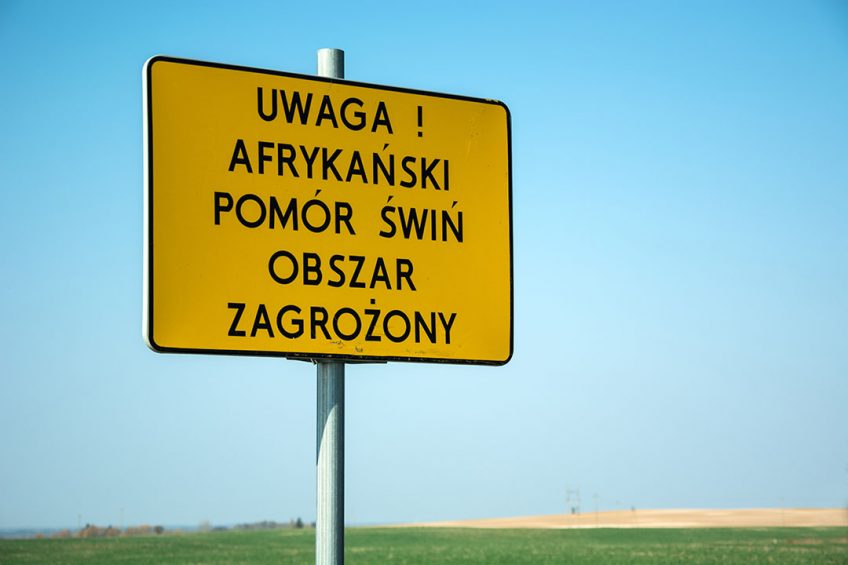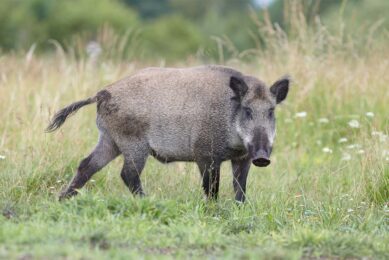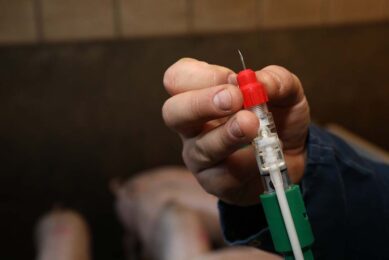ASF Poland: Restricted zones keep exports rolling

There is no doubt that African Swine Fever in Poland is causing the pork industry significant harm but exports of the meat to the US keep rolling thanks to disease control zones.
In 2018 Poland exported almost 61,000 tonnes of pork to the US worth almost € 150 million. African Swine Fever (ASF) first entered Poland in the eastern Podlaskie province in 2014 and spread to other areas including Lublin and Masovia and even around the capital Warsaw. Pork is critical to Poland’s economy accounting for exports of around € 1.5 billion and to the national population who consume over 40 kg of pork per head per year.
Poland reported 68 new cases of ASF in its domestic pig herd from July 2018 to February 2019 and 1,692 cases in its wild boar in the same period.
Maintaining pork exports from Poland
In a bid to maintain exports, the Polish government set up specialist health zones within the country which are designed to assure consumers porkmeat from a zone free of ASF is safe to eat.
This zoning programme is managed by the General Veterinary Inspectorate in Poland in official efforts to contain the spread of ASF in the country. Within protection zone and surveillance zones, producers are prohibited from moving pigs from the holding and all pig owners are obligated to immediately notify the District Veterinary Officer about all cases of dead or diseased pigs in the holding.

Poland once had much to offer as country producing pigs. Read the analysis
Areas defined by risks posed by ASF
When ASF hit Poland the authorities, in co-operation with the European Commission, set up 3 different zones that are each enforced by a different set of regulations, depending on the risk of ASF in that area. Zone 1 is a buffer zone that is disease free, zone 2 has the disease present in the wild boar population and zone 3 has ASF present in both the commercial pig population and the wild boar population. The Polish authorities say disease controls measures will be enforced in zones 2 and 3, otherwise known as protection zones, confirming to EU regulations. There will be trade restrictions on all zones and additional culling measures taken in other areas of Poland.
Various orders controlling the movements of pigs into and out of zones is also in force. Regulations controlling movements within and out of zone 1 include clinical testing of pigs by the official veterinarians not earlier than 24 hours before the movement.

Read more about pig health in the Pig Progress Health Tool
Only when a health certificate is issued by the official veterinarian confirming that no pigs show symptoms indicating ASF can the pigs be moved.
Possible sources of ASF virus introduction
However, some results of epizootic investigations have provided possible sources of ASF virus introduction into herds. These include:
• Non-compliance with biosecurity rules with regard to handling of pigs kept with another species (cattle or horses); or hay or grass for feeding animals, brought from places where cases of ASF in wild boars have occurred;
• Non-compliance with biosecurity rules as due to lack of fences, lack of disinfection mats, etc;
• Non-compliance with biosecurity rules during human activity in an area related to contamination with ASF virus;
• Illegal movements of pigs of unknown origin.
 Beheer
Beheer








 WP Admin
WP Admin  Bewerk bericht
Bewerk bericht